From the statues of ancient Greece to the modern runways of Milan, the human body has long been a canvas for artistic expression and societal ideals. The importance of body proportions in dictating aesthetics, indicating health, and driving personal confidence cannot be understated. Across cultures and time, specific proportions have been celebrated as epitomes of beauty, vitality, and attractiveness.
Among these, the shoulder to waist ratio stands out as a particularly interesting measure. Not just an indicator of physical fitness or health, this ratio is also often linked with perceptions of attractiveness, strength, and femininity or masculinity. But what is the shoulder to waist ratio, and why does it carry so much weight? This article delves into the intricate world of this specific proportion, exploring its significance both historically and in contemporary times. Whether you’re a fitness enthusiast, a curious historian, or simply someone interested in body aesthetics, this exploration of the perfect shoulder to waist ratio promises a rich understanding of a seemingly simple measurement.
What is the Perfect Shoulder to Waist Ratio?

The “perfect” shoulder-to-waist ratio can vary depending on cultural, aesthetic, and individual preferences. However, several studies and opinions from the fields of aesthetics, bodybuilding, and evolutionary psychology suggest certain ratios as more universally appealing or indicative of good health and fitness.
- Men: A V-tapered look, where the shoulders are broader than the waist, is often deemed attractive and athletic. A common ideal ratio mentioned in bodybuilding and fitness circles for men is around 1.618 (the Golden Ratio). This means that the shoulders would be 1.618 times broader than the waist. However, it’s essential to understand that achieving this ratio naturally might not be feasible for everyone, as genetics play a significant role in body shape.
- Women: The ideal shoulder-to-waist ratio for women is typically different from men. Historically, an hourglass figure, where both the shoulders and hips are broader than the waist, has been seen as attractive. Ratios can vary widely, but a common ideal is a 0.7 waist-to-hip ratio, where the waist circumference is 70% of the hip circumference. This doesn’t directly give a shoulder-to-waist ratio, but it’s another related measure of ideal proportions.
It’s crucial to understand that these ratios are based on societal standards and might change over time and across cultures. The most important thing is for an individual to feel comfortable and healthy in their own body. Always consult with a healthcare professional before making any significant changes to your fitness or nutrition regimen.
Historical Context
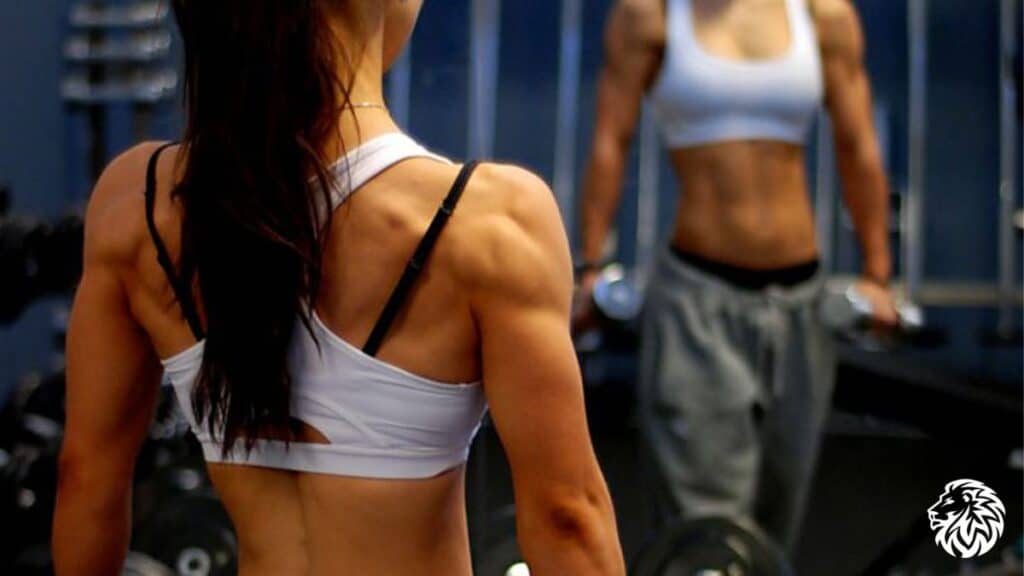
Across the vast tapestry of human history, art has often served as a mirror, reflecting the societal norms and ideals of beauty of its era. By examining historical figures and depictions in art, we can trace the ebb and flow of cultural variations and gain insight into how ideals of body proportions have evolved over time.
1. Ancient Civilizations
- Egypt: Pharaohs and noble figures were depicted with slim waists and broad shoulders, symbolizing both strength and divinity.
- Greece: The Greek ideal, especially evident in sculptures like the Discobolus or the statues of gods such as Apollo, emphasized a harmonious shoulder to waist ratio. This proportion was seen as a reflection of both physical prowess and divine beauty.
- China: Traditional Chinese art often highlighted slender figures, with less emphasis on the differentiation between the shoulder and waist, reflecting a different aesthetic ideal.
2. Renaissance and Baroque Periods
- Art from this era, such as Botticelli’s “The Birth of Venus” or Rubens’ voluptuous figures, often showcased women with fuller waists and bodies, marking a shift from the lean figures of ancient times. For men, portraits of nobility still maintained a preference for broad shoulders, indicating power and status.
3. Victorian Era to Early 20th Century
- The corseted silhouette of the Victorian era accentuated a tiny waist for women, highlighting the difference between the shoulder and waist, even if artificially.
- As we transition into the 20th century, especially with the advent of Hollywood and the silver screen, leading men were often showcased with V-tapered physiques, emphasizing a stark contrast between broad shoulders and narrow waists.
4. Late 20th Century to Present
- The modern era has seen a diverse range of body ideals, influenced by pop culture, fashion, and evolving societal norms. From the waifish look of the 90s supermodels to the fitness-driven body ideals of today, there’s a vast spectrum of what’s considered “ideal”.
- In recent years, with the rise of body positivity movements, there’s been a push towards accepting a wider range of body types, though the aesthetic of a pronounced shoulder to waist ratio, for many, remains desirable.
5. Cultural Variations
- Different cultures have their unique standards and ideals. For instance, while Western cultures might emphasize a very pronounced shoulder-to-waist ratio as the epitome of fitness or beauty, other cultures might prioritize other aspects of the physique, such as height, hip-to-waist ratio, or even facial features.
History shows us that the concept of an “ideal” body proportion, including the shoulder to waist ratio, is fluid, heavily influenced by societal norms, technological advancements (like the corset), and cultural perceptions. What remains consistent is humanity’s fascination with proportions and the pursuit of an ever-shifting aesthetic ideal.
Science Behind Proportions
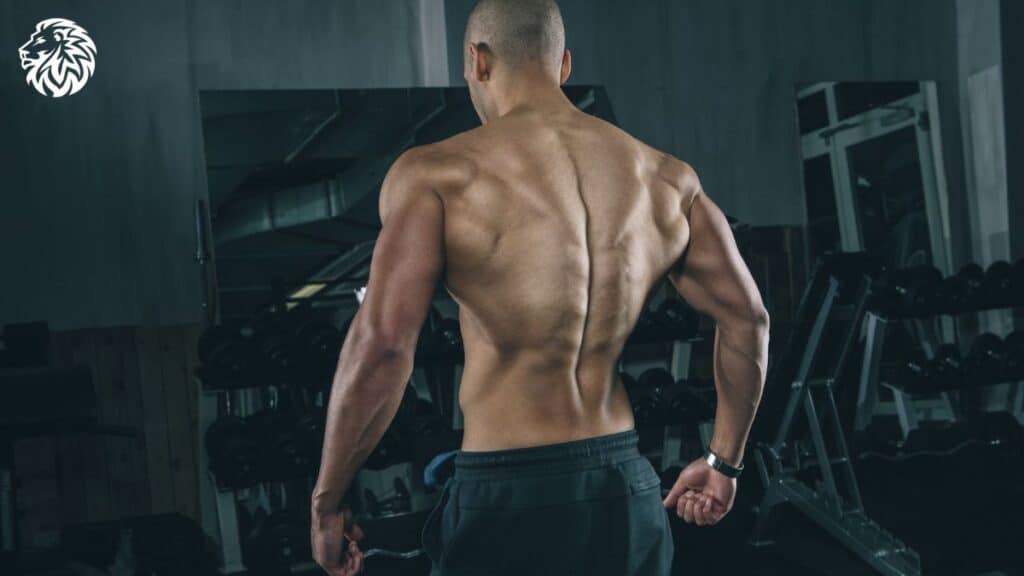
The human intrigue with body proportions isn’t purely superficial; there’s a foundation of science and evolution behind our aesthetic preferences. When we peel back the layers of societal norms and ideals, we encounter evolutionary drivers and health indicators that have shaped our perceptions over millennia.
1. Evolutionary Psychology Perspective
- Survival and Reproduction: At its core, attraction can be seen as a mechanism to identify the best potential mates who exhibit signs of health, fertility, and the ability to protect and provide. A pronounced shoulder to waist ratio in men, for instance, might signal strength, vigor, and genetic viability. Similarly, for women, certain body proportions can be indicators of fertility and overall health.
- The V-taper and Masculinity: Broad shoulders and a narrow waist in men—a V-tapered physique—have been linked with higher testosterone levels, suggesting greater virility. This shape also suggests a better ability to protect and provide, qualities that historically could have been crucial for mate selection.
- Waist-to-Hip Ratio in Women: While the focus of this article is on the shoulder to waist ratio, it’s worth noting the importance of the waist-to-hip ratio in women, which many evolutionary psychologists believe is an indicator of fertility and overall reproductive health.
2. Health Implications
- Waist Size and Visceral Fat: A larger waist size can indicate higher amounts of visceral fat, which is stored deep in the abdominal cavity. This type of fat is associated with a myriad of health risks, including heart disease, type 2 diabetes, and hypertension.
- Shoulder Width and Skeletal Health: Broad shoulders can sometimes indicate good skeletal health and, in men, might be related to higher levels of testosterone. While shoulder width is largely genetic and determined by the skeletal structure, muscle mass can also play a role.
- Fat Distribution: Where our bodies tend to store fat can be an indicator of certain health risks. For instance, apple-shaped individuals (who store more fat around the abdomen) may have a higher risk of certain diseases compared to pear-shaped individuals (who store fat around the hips and thighs).
- Beyond Aesthetics: While a pronounced shoulder to waist ratio might be aesthetically pleasing in many cultures, it’s essential to note that everyone’s ideal ratio for health may differ. Moreover, health cannot be boiled down to just one measurement or ratio—it’s a multifaceted state of physical, mental, and social well-being.
The allure of body proportions, especially the shoulder to waist ratio, goes beyond societal standards of beauty. Through the lens of evolutionary psychology, these proportions offer clues about an individual’s health, reproductive viability, and genetic strength. However, it’s imperative to approach these indicators with nuance, recognizing the diversity of human bodies and the many facets of health.
Ideal Shoulder to Waist Ratios
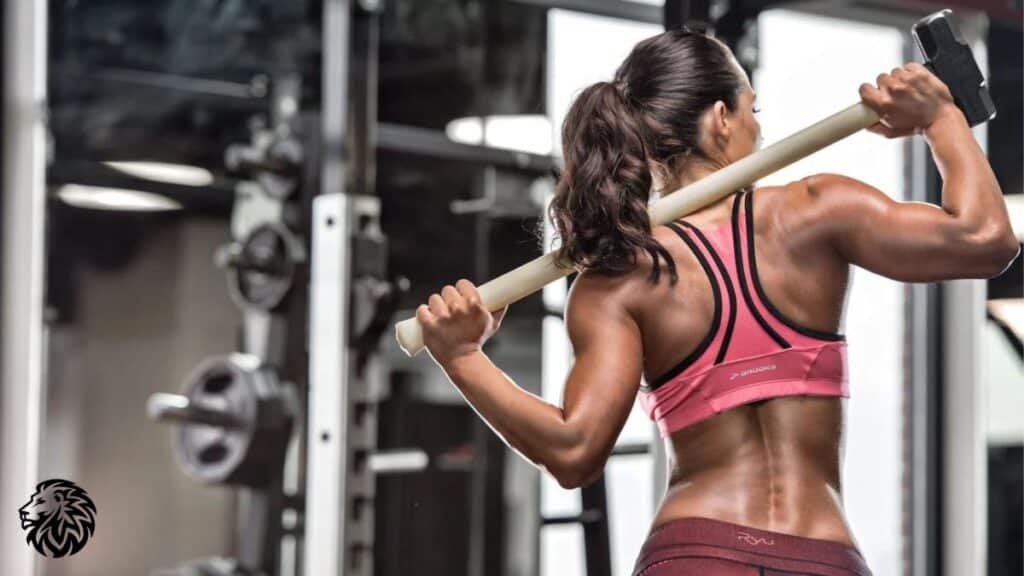
Body proportions, specifically the shoulder to waist ratio, have been discussed, dissected, and debated extensively in both scientific and aesthetic arenas. Let’s explore the current ideals and the science behind them:
For Men
- Current Standards from Physique and Bodybuilding Communities:
- Golden Ratio: Some in the bodybuilding community swear by the “Golden Ratio” (approximately 1.618:1), suggesting that if one’s shoulders are 1.618 times wider than their waist, it represents the pinnacle of aesthetic appeal.
- V-taper Ideal: Many bodybuilding and physique competitors aim for a pronounced V-taper, emphasizing broad shoulders and a narrow waist. This not only accentuates upper body mass but also makes the waist appear even smaller in comparison.
- Competition Standards: Depending on the bodybuilding category (e.g., Classic Physique vs. Open Bodybuilding), the ideal ratios can differ. Some categories might prioritize mass over aesthetics, potentially shifting the desired ratio.
- Research Findings on Attractiveness:
- Several studies suggest that women tend to find men with a higher shoulder to waist ratio more attractive. This might be tied to evolutionary cues related to health, virility, and protection.
- A common finding is that a ratio where the shoulders are around 1.5 to 1.6 times the size of the waist is often deemed attractive. However, it’s important to note that individual preferences can vary widely.
For Women
- Role of Shoulder to Waist Ratios in Perceptions of Femininity:
- In women, the shoulder to waist ratio is less often discussed than the waist to hip ratio. However, it still plays a role in perceptions of overall body shape and femininity.
- Broad shoulders on women can be associated with athleticism and fitness. While traditional standards of femininity often emphasized a more delicate frame, contemporary views appreciate a diverse range of body types, including those of athletic women with broader shoulders.
- Research on Preferred Proportions:
- Research has shown that, just like in men, a more pronounced difference between the shoulder and waist can be deemed attractive. However, the ideal ratios can differ based on cultural and societal norms.
- Some studies suggest that a balanced proportion, where the bust, waist, and hips align in an hourglass figure, is often idealized. In this context, the shoulders’ width usually aligns with the hip measurement, framing a narrower waist.
While there are general ratios that many deem “ideal” based on research and community standards, it’s crucial to understand that attractiveness and health are multifaceted. Individual preferences, cultural backgrounds, and evolving societal standards play significant roles in shaping perceptions. Moreover, while aiming for a specific ratio can be a motivating fitness goal, it’s essential to prioritize health, functionality, and self-confidence above all.
Factors that Influence Shoulder to Waist Ratios
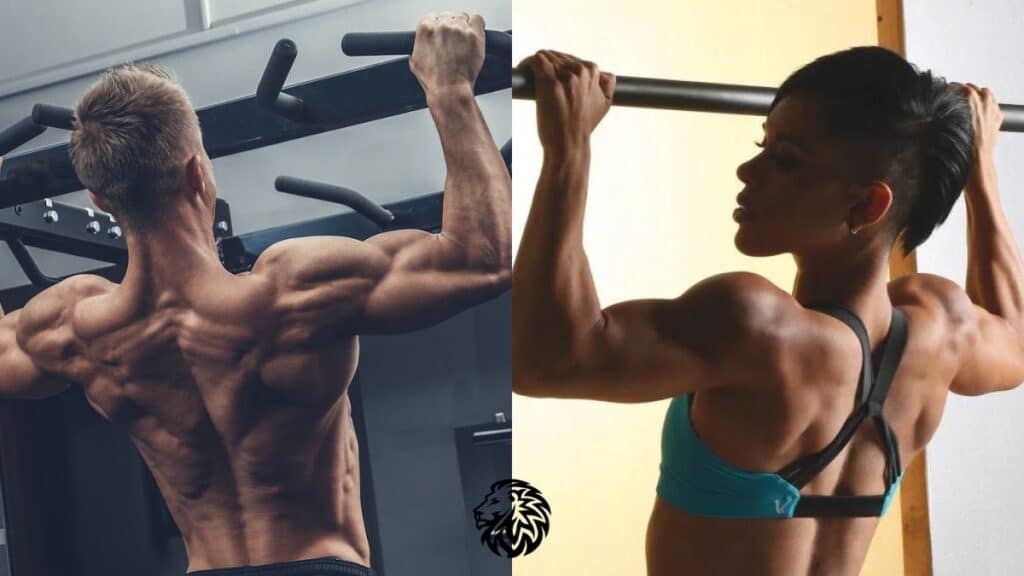
The human body is a complex interplay of genetics, environmental factors, choices, and time. Let’s break down the significant influencers of the shoulder to waist ratio.
1. Genetics
- DNA Blueprint: Our genes, passed down from our ancestors, play a pivotal role in determining our skeletal structure. This includes the width of our shoulders and the natural size of our waist.
- Fat Distribution: Genetics also dictate where we tend to store fat. Some individuals might accumulate fat around their midsection, affecting their waist measurement, while others might deposit it elsewhere.
- Muscle Mass Potential: While everyone can build muscle with training, the rate at which we gain muscle and our potential peak muscle mass may have genetic components.
2. Lifestyle Factors
- Diet: Our dietary habits influence our body fat percentage and muscle mass. Consuming excess calories, especially when combined with a sedentary lifestyle, can lead to an increase in waist size. Conversely, a balanced diet can help maintain a healthy waist size and support muscle growth.
- Exercise: Regular strength training, especially exercises targeting the deltoids and lats, can help increase shoulder width. Conversely, core exercises can strengthen the waist area, and cardiovascular activity can help reduce excess body fat.
- Specific exercises, such as overhead presses, lateral raises, and pull-ups, can emphasize shoulder development.
- For the waist, a combination of oblique exercises, transverse abdominis exercises, and overall core strengthening can be beneficial.
- Posture: Maintaining proper posture can have a visible impact on the shoulder to waist ratio. Slouching can obscure shoulder width and make the waist appear wider. Standing tall and engaging the core can present a more pronounced ratio.
3. Aging
- Metabolism Shifts: As we age, our metabolism tends to slow down, which can lead to weight gain around the midsection if not counteracted by diet and exercise adjustments.
- Muscle Mass Reduction: Aging can bring about sarcopenia, the natural loss of muscle mass. This can affect both the shoulders and the waist.
- Bone Density Changes: Over time, especially in post-menopausal women, bone density can decrease, potentially affecting the skeletal structure, including shoulder width.
- Hormonal Changes: Hormones play a role in fat distribution. For instance, post-menopause, women might notice a shift in fat storage patterns, often accumulating more around the abdomen.
While genetics set the foundation for our shoulder to waist ratio, it’s by no means the sole determinant. Our lifestyle choices, especially diet and exercise, can significantly influence this ratio. Moreover, as we navigate through life’s different stages, the natural process of aging brings about changes, reminding us of the importance of adaptability and self-acceptance.
How to Measure Shoulder to Waist Ratio
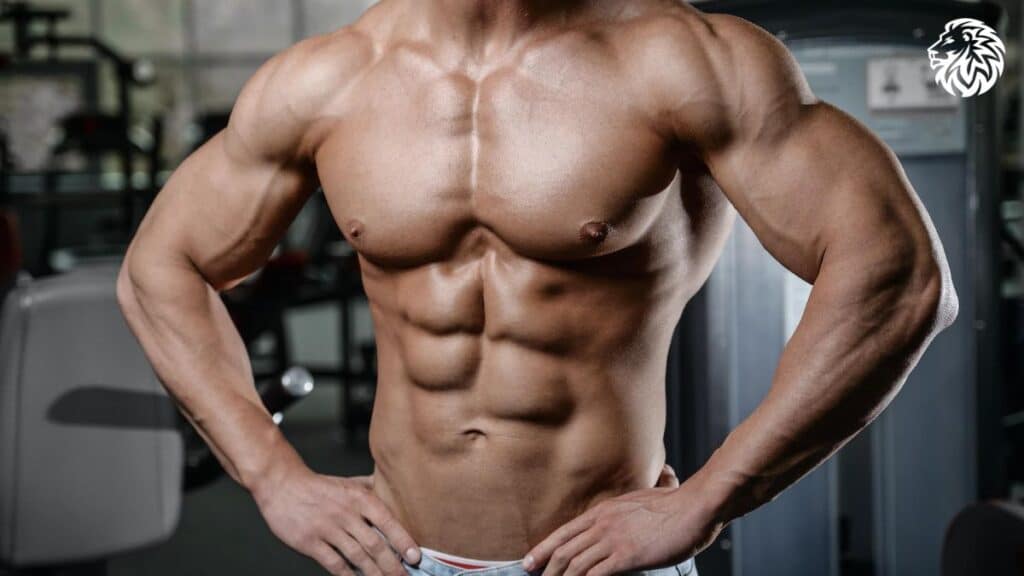
Understanding how to correctly measure your shoulder to waist ratio is crucial for accuracy. Here’s a step-by-step guide on how to do it:
1. Proper Tools and Techniques
- Measuring Tape: Use a flexible measuring tape, typically the kind used for tailoring or sewing. It should be able to wrap around body parts comfortably.
- Mirror: To ensure you’re positioning the tape correctly, standing in front of a full-length mirror can be helpful.
- Consistent Conditions: Measurements should ideally be taken under the same conditions each time. For instance, measuring in the morning before eating is different from measuring post-dinner. Wear similar clothing (or lack thereof) each time you measure.
2. Steps to Measure
- Waist:
- Stand straight and relax. Do not suck in your stomach.
- Find the narrowest part of your waist, usually just above the belly button.
- Wrap the tape around your waist, ensuring it’s level and not tilted.
- The tape should be snug but not tight—no compressing of the skin.
- Record the measurement.
- Shoulders:
- Stand straight with your arms relaxed at your sides.
- Start the tape at the outer edge of one shoulder.
- Extend it horizontally across your back to the outer edge of the other shoulder. This measurement is usually taken at the widest part.
- Ensure the tape is parallel to the ground, not sagging or angling.
- Record the measurement.
3. Calculating the Ratio
- Once you have both measurements, calculate the ratio by dividing the shoulder measurement by the waist measurement.
- For example, if your shoulders measure 50 inches around and your waist measures 32 inches, the ratio would be: 50/32 = 1.56
4. Common Mistakes to Avoid
- Tilting Tape: Ensure the measuring tape remains parallel to the floor for both measurements.
- Over-Tightening: Pulling the tape too tight can give inaccurate readings, especially around the waist.
- Inconsistent Measurement Points: Always measure at the same points. For example, if you measure your waist above your belly button one time and below another time, you’ll get different measurements.
- Not Relaxing Muscles: Especially when measuring the waist, it’s crucial to be relaxed and not suck in the stomach or flex the muscles.
Measuring your shoulder to waist ratio is a straightforward process, but ensuring accuracy is key. Consistency in how and when you measure will give you a clearer picture of any changes over time, whether you’re tracking for fitness, health, or aesthetic reasons. Remember, while ratios can provide insights, they’re just one metric among many for understanding your body.
Ways to Improve Shoulder to Waist Ratio
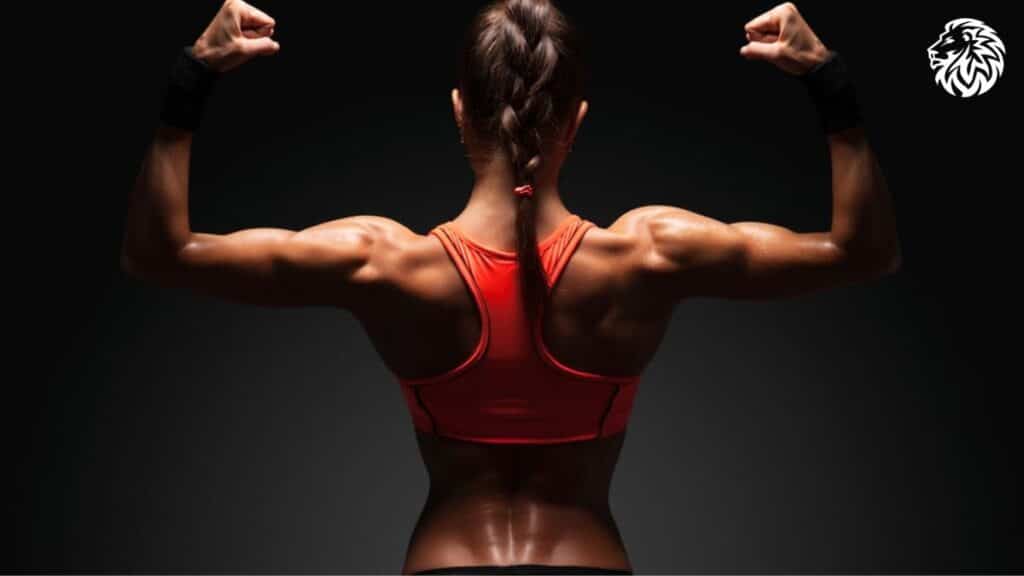
Improving your shoulder to waist ratio can lead to a more V-tapered and aesthetically pleasing physique for many individuals. Here’s how you can work towards achieving that:
1. Strengthening and Hypertrophy Exercises for the Shoulders
- Overhead Press: A compound exercise targeting the deltoids. Can be done with dumbbells, barbells, or kettlebells.
- Lateral Raises: This isolation movement targets the middle deltoids, giving width to the shoulders.
- Front Raises: Focuses on the anterior deltoids.
- Rear Delt Flyes: Targets the posterior deltoids, balancing out shoulder development.
- Face Pulls: A great exercise for the rear delts and upper traps.
- Shrugs: While primarily for the trapezius, they can enhance the overall appearance of the upper body.
2. Core Exercises and Tips for Reducing Waist Size
- Planks: A foundational core exercise that targets the entire abdominal region.
- Russian Twists: This rotational movement engages the obliques.
- Hanging Leg Raises: Focus on the lower abs but engage the entire core.
- Vacuums: An exercise that targets the transverse abdominis, helping to pull the waist in.
- Aerobic Exercise: Incorporating regular cardio helps burn calories and reduce excess body fat.
3. Nutrition Guidelines to Support a Healthy Waistline
- Balanced Diet: Focus on whole foods like lean proteins, whole grains, healthy fats, and plenty of fruits and vegetables.
- Monitor Caloric Intake: To reduce waist size, you may need to be in a caloric deficit. Use tools or consult a nutritionist to determine your daily caloric needs.
- Stay Hydrated: Drinking ample water supports metabolism and helps reduce bloating.
- Limit Processed Foods: Reduce intake of foods high in sodium, sugars, and unhealthy fats which can contribute to increased belly fat and bloating.
- Increase Fiber Intake: Foods high in fiber, like whole grains and vegetables, can help with digestion and give a feeling of fullness.
4. The Role of Clothing in Enhancing Perceived Ratios
- Wide Necklines: Wearing boat necks or off-the-shoulder tops can make the shoulders appear broader.
- Vertical Stripes: Vertical patterns or seams can elongate the body and make the waist appear smaller.
- High-Waisted Bottoms: Pants or skirts that sit high on the waist can create the illusion of a narrower waist.
- Tailored Clothing: Clothes that fit well can highlight the V-tapered look, emphasizing broad shoulders and a slim waist.
- Belts and Tucking: Using belts or tucking shirts can accentuate a narrow waist, especially if the outfit is monochromatic.
Improving the shoulder to waist ratio involves a combination of targeted exercises, nutritional choices, and even the way you dress. While working towards your desired ratio, it’s crucial to maintain a holistic approach, ensuring that overall health and functional fitness aren’t compromised.
Conclusion
The pursuit of the “perfect” shoulder to waist ratio has long been entwined with cultural, aesthetic, and health ideals. Over time, these standards have shifted, molded by historical contexts, societal influences, and evolving perspectives on beauty and health.
However, as we delve deeper into understanding body proportions and aesthetics, one truth emerges: there is no one-size-fits-all “perfect” ratio. While certain ratios may be celebrated in specific circles or deemed universally attractive based on certain studies, the true value lies in individual health, self-confidence, and well-being.
It’s essential to approach the topic with a broader perspective. Striving for a specific shoulder to waist ratio should be balanced with the understanding that each body is unique. Genetic factors, life experiences, and personal choices all interplay in creating our individual physiques.
Rather than strictly adhering to a particular ratio, the emphasis should be on maintaining good health, nurturing self-confidence, and celebrating our bodies for their strength, resilience, and individual beauty. After all, true attractiveness radiates from those who are confident in their skin, irrespective of specific measurements. In the quest for the “perfect” ratio, let’s not forget that perfection is, more often than not, a perception—and one that we have the power to define for ourselves.








1 thought on “What is the Perfect Shoulder to Waist Ratio?”
“A common ideal ratio mentioned in bodybuilding and fitness circles for men is around 1.618 (the Golden Ratio).” Thanks for the details